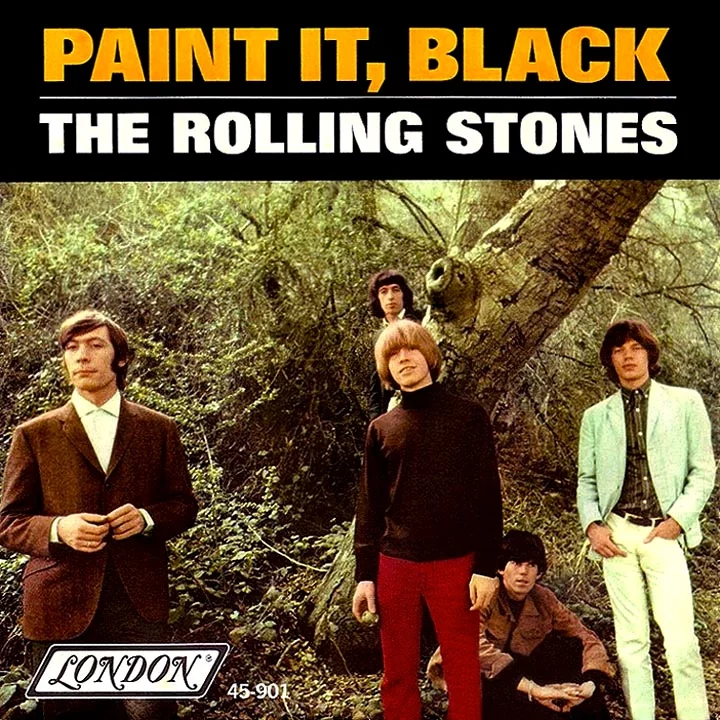
About the Song
In the vast and vibrant tapestry of rock and roll, certain songs transcend their time, becoming cultural touchstones that resonate across generations. The Rolling Stones – Paint It, Black is undoubtedly one such masterpiece. Released in 1966, this iconic track not only topped the charts but also etched itself into the very fabric of popular music, showcasing the band’s remarkable ability to blend diverse musical influences into a sound that was both innovative and undeniably their own.
Paint It, Black arrived at a pivotal moment in music history. The mid-1960s were a period of intense creative ferment, with artists pushing the boundaries of traditional genres and experimenting with new sounds and technologies. Within this context, The Rolling Stones, already established as rock and roll rebels, delivered a song that was darker, more complex, and more introspective than much of their earlier work. This marked a significant departure, showcasing their artistic growth and willingness to explore uncharted territories.
One of the most striking aspects of Paint It, Black is its distinctive instrumentation. The prominent use of the sitar, played by Brian Jones, immediately sets the song apart. This exotic instrument, traditionally associated with Indian classical music, infuses the track with a haunting, almost mystical quality. It’s not simply a gimmick; the sitar’s drone and intricate melodic lines weave seamlessly into the song’s fabric, creating a rich and textured sonic landscape. This bold incorporation of non-Western instrumentation was quite groundbreaking for the time, reflecting the growing cross-cultural influences in popular music.
Beyond the sitar, the rest of the band’s performance is equally compelling. Mick Jagger’s vocals are raw and emotive, conveying a sense of deep melancholy and despair. His delivery is both powerful and nuanced, capturing the song’s underlying themes of grief and loss. The driving rhythm section, anchored by Charlie Watts’s steady drumming and Bill Wyman’s bassline, provides a solid foundation for the song’s complex arrangement. Keith Richards’s guitar work, while not as overtly flashy as some of his other performances, is essential to the song’s overall feel. His riffs are sharp and precise, adding a sense of urgency and tension.
Lyrically, Paint It, Black delves into the depths of human emotion, exploring themes of grief, depression, and a world shrouded in darkness. The lyrics paint a vivid picture of a person struggling with loss, seeing everything around them as if it were covered in black paint. This metaphorical use of color creates a powerful and evocative image, conveying the profound impact of grief on one’s perception of reality. The lines are poetic and evocative, resonating with anyone who has experienced the pain of loss.
The song’s structure is also noteworthy. It builds gradually, starting with a relatively simple arrangement and then adding layers of instrumentation and intensity as it progresses. This dynamic approach keeps the listener engaged and creates a sense of dramatic tension. The song’s climax, with its soaring vocals and swirling sitar lines, is both powerful and cathartic.
Paint It, Black’s influence on subsequent music is undeniable. Its innovative use of instrumentation, its exploration of darker themes, and its overall artistic ambition paved the way for countless artists in various genres. It remains a testament to The Rolling Stones’s enduring genius and their ability to create music that continues to captivate and inspire audiences decades later. It’s more than just a song; it’s a cultural artifact, a snapshot of a particular moment in time, and a timeless exploration of the human condition.